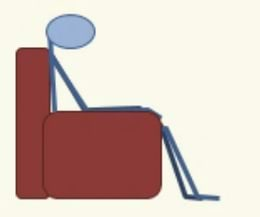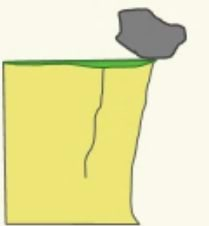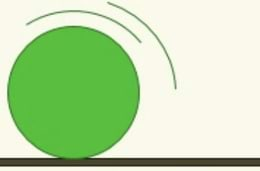Learning focus: | An energy store of some kind is necessary for something to happen, and something happens when energy transfers between energy stores. |
Observable learning outcome: | Identify objects that have a store of energy |
Question type: | Diagnostic, simple multiple choice |
Key words: | Energy store |
When Solomon, (1983) asked children to write three or four sentences showing how they use the word ‘energy’, she found that they predominantly think about energy in terms of:
- Human activity - I’m tired because I have run out of energy or I can run very fast because I have a lot of energy
- Health - exercise is good for you because it builds up your energy, when we run out of energy we need medicines and vitamins
- Food and fuels - some objects contain a lot of energy that can be consumed and then used up to help us move about and to make other things happen
Driver et al (1994) also note that many students link energy with movement and force.
Much of the challenge of teaching energy stems from differences between the everyday and scientific use of the word ‘energy’ (Millar, 2014).
In teaching energy the BEST resources have adopted a framework based on ‘energy stores’ and ‘energy pathways’ which is advocated by, amongst others, (Boohan, 2014), (Millar, 2014) and (Tracy, 2014). As Millar (2014) says, this approach “is not perfect - but it is adequate and significantly better than [approaches] based on lists of ‘forms of energy’.” A clear guide to this approach can be found on the Institute of Physics’ website (Institute of Physics).
To be consistent to this approach this question refers to ‘energy stores’ and not ‘types of energy’. A summary of the BEST approach to teaching energy can be found on the Best Evidence Science Teaching home page which is on the STEM Learning website (Fairhurst, 2018).
Students should complete the question individually. This could be a pencil and paper exercise, or you could use an electronic ‘voting system’ or mini white boards and the PowerPoint presentation. The answers to the question will show you whether students understood the concept sufficiently well to apply it correctly.
If there is a range of answers, you may choose to respond through structured class discussion. Ask one student to explain why they gave the answer they did; ask another student to explain why they agree with them; ask another to explain why they disagree, and so on. This sort of discussion gives students the opportunity to explore their thinking and for you to really understand their learning needs.
Differentiation
You may choose to read the questions to the class, so that everyone can focus on the science. In some situations it may be more appropriate for a teaching assistant to read for one or two students.
Questions 1 and 4 can reveal the misunderstanding that we feel tired because we have run out of energy.
In question 2 it is important to say that the food has an energy store, and is not itself energy.
Questions 3 and 5 can reveal the misunderstanding that energy is linked to movement and force. If students are thinking in this way, they are likely to say the static rock does not have an energy store.
If students have misunderstandings about identifying objects that have an energy store, it can be helpful to consider the objects using the idea that: “an energy store of some kind is necessary for something to happen” (Millar, 2005). In each case students can be challenged to identify what could happen because there is an energy store.
Further examples would allow students to practise using the concept so that they can consolidate their understanding. This approach often works best when students work in pairs or small groups, which encourage social construction of new ideas through dialogue.
In talking about energy teachers need to be very careful to model accurate language. Energy does not make things happen – even though this is commonly stated in text books. Things happen when energy transfers between energy stores, and for this to be possible there needs to be energy stores. (The reasons why energy transfers between stores is described in the second law of thermodynamics, which is too advanced for almost all 11-14 year olds.)
Boohan, R. (2014). Making sense of energy. School Science Review, 96(354), 11. Driver, R., et al. (1994). Making Sense of Secondary Science: Research into Children's Ideas, London, UK: Routledge.
Fairhurst, P. (2018). Teaching Energy. [Online]. Available at: https://www.stem.org.uk/best-evidence-science-teaching.
Institute of Physics. Supporting Physics Teaching (SPT): Energy [Online]. Available at: http://supportingphysicsteaching.net/EnHome.html [Accessed July 2018].




